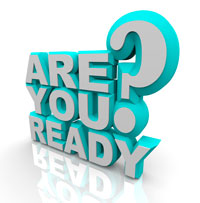This news item expired on Sunday, March 31, 2013 so the information below could be outdated or incorrect.
Public health emergencies are a concern for many. Here in Western North Carolina, we have experienced snow storms, flooding, and heavy winds which can all cause a loss of power and a need to keep food cold and prepare it without electricity.
Emergencies can also cause us to need to leave our home suddenly, or stay inside our home without the ability to go to the store to pick up food or supplies. There are actions we can take to be prepared that will help us deal with all sorts of disasters more effectively.
 Here are 3 easy steps you can take to protect you and your loved ones:
Here are 3 easy steps you can take to protect you and your loved ones:
-
Build a Kit
-
Make a Plan
-
Be Informed
Build a Kit
If disaster strikes, you may not have access to food, water, or electricity for some time. By taking time to prepare, you can provide for your entire family. A disaster kit is a collection of basic items that may be needed in the event of an emergency.
Assemble the following items to create kits for use at home, the office, at school or in a vehicle. Remember to consider the needs of all family members when adding supplies to your kit. And don't forget to prepare for your pets and service animals.
-
Water - one gallon per person, per day (3 day supply for evacuation, 2 week supply for home)
-
Food - nonperishable, easy-to-prepare items (3 day supply for evacuation, 2 week supply for home)
-
Flashlight
-
Battery powered or hand-crank radio (NOAA Weather Radio, if possible)
-
Extra batteries for flashlight and radio
-
First aid kit
-
Medicines (7 day supply) and medical items
-
Multi-tool knife
-
Sanitation and personal hygiene items
-
Copies of personal documents (medication list and specific medical information, proof of address, deed/lease to home, passports, birth certificates, insurance policies)
-
Cell phone with chargers
-
Family and emergency contact information
-
Extra cash (without electricity, ATM machines won’t work)
-
Emergency blanket
-
Map(s) of the area
-
Medical supplies (hearing aids with extra batteries, glasses, contact lenses, syringes, cane)
-
Baby supplies (bottles, formula, baby food, diapers)
-
Games and activities for children
-
Pet supplies (collar, leash, ID, food, carrier, bowl)
-
Two-way radios
-
Extra set of car keys and house keys
-
Manual can opener
-
Whistle
-
N95 or surgical masks
-
Matches
-
Rain gear
-
Towels
-
Work gloves
-
Tools/supplies for securing your home
-
Extra clothing, hat and sturdy shoes
-
Plastic sheeting
-
Duct tape
-
Scissors
-
Household liquid bleach
-
Entertainment items
-
Blankets or sleeping bags
Make a Plan
Create a family disaster plan which includes a communication and an evacuation plan. Arrange to share responsibilities and work together as a team. Remember to practice on a regular basis.
-
Post emergency telephone numbers by phones (fire, police, ambulance, etc.).
-
Teach children how and when to call 911 or your local Emergency Medical Services number for emergency help.
-
Determine the best escape routes from your home. Find two ways out of each room.
-
Pick two places to meet:
-
Right outside your home in case of a sudden emergency, like a fire.
-
Outside your neighborhood in case you can’t return home. Everyone must know the address and phone number.
-
Find the safe spots in your home for each type of disaster.
-
Develop different ways for communicating during emergency situations. Share your plans beforehand with all those who would be worried about your welfare.
-
Show each family member how and when to turn off the water, gas, and electricity at the main switches.
-
Find out how to help elderly or disabled persons, if needed.
-
Check if you have enough of the correct kind of insurance coverage.
-
Teach each family member how to use the fire extinguisher, and show them where it’s kept.
-
Install smoke detectors on each level of your home, especially near bedrooms.
-
Conduct a home hazard hunt.
-
Stock emergency supplies and create a disaster supplies kit.
-
Find out about the disaster plans at your workplace, your children’s school or daycare center, and other places where your family spends time.
-
Take a Red Cross first aid and CPR class.
Be Informed
Knowing what to do before, during and after an emergency is a critical part of being prepared and may make all the difference when seconds count. When you know what to do, you can plan with your household and prepare in advance to be ready.
Learn about the signs of weather events that come without warning. Know the local advance alerts and warnings and how you will receive them. Knowing about the local emergency plans for shelter and evacuation and local emergency contacts will help you develop your household plan and will also aid you during a crisis.
Learning what to do in different situations and developing specific plans for your local hazards will help you reduce the impact of disasters.
For more information, go to www.buncombecounty.org/preparedness or www.ready.gov.